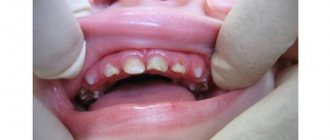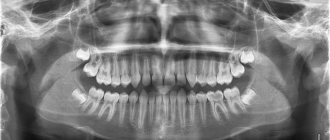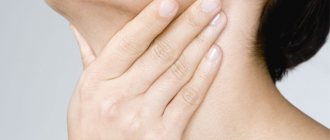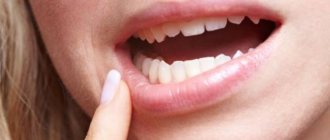Tooth pain from sweets is an unpleasant sensation inside the tooth every time you use sugar-containing products internally. Such discomfort occurs only when eating cakes, sweets, chocolate, any sugar-containing confectionery or sweet soda.
It is worth noting that the pain itself is initially provoked not only from sweets - this is in extreme cases. It can last from several seconds to several minutes, and despite its short-term nature, it causes a lot of inconvenience to a person. It is important to remember that there is a line between simply inconvenience in a tooth and the destructive processes that begin in it. In the second case, there is a possibility of losing bone formation. It is important to know not only the causes, but also the main symptoms in order to avoid this.
What are the dangers of sweets?
Almost all sweet products: sugar, soda and syrups, jam, confectionery, sweet fruits (bananas, strawberries) are classified as simple carbohydrates. Such foods are broken down very quickly in the body and increase the amount of glucose in the blood, adding energy. This is effective before sports. When energy is not wasted, it is deposited in the form of fat reserves.
To break down and absorb simple carbohydrates, the body needs B vitamins and calcium. Teeth become a source for quickly obtaining the necessary macronutrients.
If the diet does not have enough vitamins and calcium, and a person consumes sweets excessively, then the expended reserves of necessary substances do not have time to be restored. This is how the process of internal tooth decay occurs. During this process, the enamel becomes thinner and caries develops.
What can you do at home?
When a toothache hurts after eating something sweet, and there is no way to see a dentist, the remedies at hand will help you feel better. First of all, you should rinse your mouth with plain water, a soda-saline solution, or an aqueous infusion of medicinal plants (for example, chamomile).
On a note! If the pain does not go away, it is recommended to take an analgesic, apply cold to the cheek in the projection of the diseased tooth, and apply a lotion to the mucous membrane of the gums with propolis. You should refrain from eating for some time, and in the future (until visiting a doctor) give preference to foods that do not contain sugars.
Favorable environment for bacteria
There are always bacteria in the mouth, even if you brush your teeth regularly. They do not react with meat products, most vegetables and fish. Such foods do not affect the condition of teeth.
Why do teeth react with sweets, and what happens when simple carbohydrates enter the body? Simple carbohydrates react with bacteria, resulting in the formation of organic acid in the oral cavity, which has a negative effect on the surface of the teeth. As a result of these processes, the enamel becomes thinner, destroyed and caries begins to develop.
Saliva contains special substances that can neutralize harmful organic acids. With the regular intake of sweets into the oral cavity in large quantities, the body is not able to fully protect tooth enamel.
Buns and cakes
If we are talking about baking, then there is only danger from nutritional science. Various rolls, pastries, cakes with different creams - protein, sour cream, butter - do not harm your teeth at all. The same principle works here as with chocolate: such sweets do not stay in the mouth for a long time, we chew them and again stimulate the washing of the teeth with saliva, followed by their mineralization. Therefore, this option can also be called harmless to human teeth.
So fickle! How to protect baby teeth from caries Read more
Harmful sweets
Dentists are convinced that any sweets have a negative effect on the tooth surface. However, some treats are extremely dangerous.
The following sweets cause maximum damage to teeth:
- Iris . All chewing candies stick to the surface of the teeth and become clogged in the interdental spaces. Because of this, the remains of such treats remain in the mouth for a long time. They cause the growth of pathogenic bacteria and the production of organic acid, which damages the enamel.
- Caramel . All kinds of candies, as well as creamy caramel, consist of a large amount of sugar (more than 50%). Such sweets are designed to be absorbed, which means they stay in the mouth for a long time and have a detrimental effect on the teeth.
- Chocolate . Chocolate products, like caramels, consist of 50% sugar. Therefore, the consumption of this kind of treats, especially in large quantities, is not recommended.
Dark chocolate causes the least damage to tooth enamel. This product contains less sugar and is enriched with tannins, which disinfect the oral cavity and slow down the growth of pathogenic microorganisms.
All clear. I won't eat sweets, is that enough?
No, unfortunately, this is not at all enough.
Nowadays, the concept of “added sugar” has appeared; it is found in products where it should not normally be present. Sugar appears in kindergarten borscht and vegetable stews, if you check the technological map, and is found in store-bought sauces, semi-finished products, bread, packaged juices, baby formula and yoghurts. Bread can be as varied as you like with sprouted grains of all kinds of crops, but almost every “brick”, every “loaf” contains about 4 tablespoons of sugar. The inscription “sugar-free” on the label is currently even more alarming than the honest sugar in the composition.
Sugar has many synonyms in the food industry: molasses, molasses, grape sugar, coconut sugar, brown rice syrup, glucose-fructose syrup, maltodextrin, honey, invert sugar, agave syrup, Jerusalem artichoke syrup - about 60 names in total.
When we eat a cereal bar, we first get a dose of broken down carbohydrates and only then the potential benefits of a piece of fruit or traces of grains.
Russian “Japanese” cuisine can be distinguished separately - to prepare rice for sushi, rice vinegar and sugar, ginger and Wasabi seasoning, Teriyaki and Blue Cheese sauces, which also contain sugar, are used. Instead of immodest fish and rice, it’s more honest to eat a chocolate bar.
It is the added sugar that poses the biggest problem - while we can consciously give up obviously sugary foods, such as candy and baked goods, then the added sugar is hiding in places we didn’t expect.
Natural pests
Not only sucrose, which is part of chocolate and sweets, but also fructose, which is found in some fruits and berries, has a harmful effect on tooth enamel.
Dentists recommend minimizing the consumption of the following treats:
- Dried fruits . Sweet prunes and raisins contain a large amount of fructose. This substance affects tooth enamel in almost the same way as sucrose. Dried fruits have an inherent viscosity, not unlike toffees. This means that they can also get clogged between the teeth and remain in the oral cavity for a long time.
- Candied fruits . Pieces of dried mango, kiwi and pineapple attract attention with their “naturalness”. However, candied fruits are sprinkled with sugar and sometimes tinted with dyes, which makes them little different from ordinary sweets.
- Sour fruits . Citrus fruits (oranges, lemons) cause significant damage to teeth. They contain a large amount of fruit acids, which can corrode enamel in the same way as candy.
conclusions
Tooth pain from sweets is the most common question in dental offices. This is a solvable problem, but if you don’t focus on it in time, unpleasant consequences are inevitable. In addition, this is a primary issue not only of health, but also of the social aspect in general. A person who experiences cutting pain over and over again (even for a short period of time) cannot feel comfortable in society. The reasons for this feeling can be various factors - from cold or hot food, to a crack in the tooth and damage to the enamel. The consequences include not only pain, but also complete tooth decay over time. Timely treatment in this case is one of the ways to prevent tooth loss. This issue is especially acute for people aged 20-40 years.
More fresh and relevant information about health on our Telegram channel. Subscribe: https://t.me/foodandhealthru
We will be grateful if you use the buttons:
How to minimize harm from sweets
The best option is to completely give up sweets. But for most adults, and especially for children, this option is unacceptable. According to statistics, there are very few people who are absolutely indifferent to sweets.
There are some recommendations for proper consumption of sweets, following which helps reduce the negative impact of sweets on teeth.
- The right treats . Experts recommend eating soft, but not sticky treats. For example, instead of toffees and marshmallows, it is better to choose cream cakes. They do not stick to tooth enamel and are easily removed after a couple of sips of drink.
- Sweets after meals . This rule is often voiced by parents to their children. After all, by eating sweets, you can “kill” your appetite. Dentists state this rule a little differently. During a meal (eating soup or side dish), a process of abundant saliva production occurs in the oral cavity. It is in this environment that sweets should be placed in order to neutralize organic acid as much as possible.
- Diet . Eating sweets should not be spread out over the whole day. It is recommended to eat the entire portion at one time. Constant snacking on sweets, cookies and chocolate regularly feeds bacteria. Such eating of sweets can lead to rapid destruction of enamel and the development of caries.
- Maintaining hygiene . From early childhood, you need to teach your child to brush their teeth. To reduce the negative impact of sweets on your teeth, you need to rinse your mouth after eating it. If this is not possible, then rinsing can be replaced by short-term use of chewing gum.
Painful reaction to sweets after installation of a filling
There are often cases when a tooth reacts to sweets (it hurts, “shoots,” “twitches”) after a filling is installed. Unpleasant sensations arise due to mechanical (drill) and chemical (etching with a special compound to improve adhesion) effects on its tissue. Such manipulations can lead to a sharp decrease in the protective properties of the enamel layer, especially if there were prerequisites for this, for example, a reaction to cold and hot food.
Normally, if there is no caries, the tooth is cured, the filling is installed, then there should be no pain. If the procedure was carried out in violation of the protocol (for example, the filling material was applied poorly), pain from sweets becomes an inevitable consequence, requiring a second visit to the doctor.
What to replace unhealthy sweets with
Not all sweets are harmful to the body. Some treats can be beneficial. Dentists advise replacing harmful toffees and caramels with the following products:
- Honey _ It is a natural product rich in glucose and fructose. However, honey also contains a large amount of useful substances, vitamins, amino acids and minerals.
- Nuts . Most nuts combined with honey can replace any candy. Unlike confectionery sweets, nuts saturate the body with protein.
- Berries and fruits . Healthy alternatives to candy include pears, apples, raspberries or cherries.
- Dairy desserts . Natural yogurt with berries or cottage cheese with fruits also have a sweet taste. At the same time, dairy products are rich in vitamins and calcium.
Before you eat another piece of delicacy, you need to remember that it can not only hit your figure, but also harm your smile.
Forgot about fructose. How are things going with her?
With fructose, everything is ambiguous.
Fructose, in fact, is not particularly needed by our body - practically no cells can absorb it in its pure form, so the liver converts fructose into glucose. This process uses enzymes that we don't have much of, so much of the fructose is immediately converted into fat. Let's imagine that by eating a regular cookie, we can burn off the resulting glucose by exercising while it circulates in the blood and has not turned into fat. This “trick” will not work with fructose-containing cookies.
Fructose is processed without the participation of insulin, but there are still more disadvantages in this situation: eating disorders, a very delayed feeling of satiety, and again metabolic syndrome, one of the signs of which is insulin resistance.
With fruits it's different. In them, fructose is bound to fiber, which slows down its release, and it is also extremely difficult to eat enough fruit to get a dose of sugar equivalent to a chocolate bar.
Top 3 dangerous sweets
Dentists are unanimous in their opinion: all sugar-containing products are harmful to teeth. However, among these sweet enemies there are three main villains that can cause irreparable harm to crowns and gums. Meet:
- Princess Caramel . Yes, fresh lemon montpensiers and flavored peppermint candies are 58% sugar. That is, when you watch cartoons with your baby and enjoy countless caramels together, consider that you are eating sugar together with spoons. Moreover, lollipops take a long time to dissolve and, being in the mouth for a long time, activate the growth of bacteria that damage the enamel.
- Toffee's maids of honor . Kids love to enjoy delicate creamy toffees at any time of the day or night. However, such sweets stick to the teeth while chewing, and most importantly, they fill the interdental spaces with sugar. The sweet substance takes a long time to dissolve and provokes the growth of bacteria that are harmful to the enamel. By the way, it is toffee lovers who are most often diagnosed with caries in the spaces between their teeth.
- King Chocolate . Unfortunately, like caramel, chocolate and chocolate products consist of more than 50% sugar. And if dark chocolate is not so harmful, then children’s favorite milk and white sweets have a detrimental effect on teeth.
Sweet soda, kvass and cheap packaged juices are also harmful to children's teeth. These products also contain a significant dose of sugar.
As we have already said, sugar has a bad effect not only on the condition of your teeth. This sweet powder destroys both bones and the cardiovascular system, and also increases appetite and causes the release of insulin into the blood.
What to do and how to treat
Often, in such a situation, the patient experiences severe pain, especially at night. To wait until morning to see your doctor, you should take painkillers such as Paracetamol or Ibuprofen. It is useful to rinse the mouth with antiseptics: Furacilin, Miramistin, Chlorophyllipt. Folk remedies also help. We are talking about disinfecting solutions with soda and salt. For rinsing, infusions of valerian or oak bark, chamomile or calendula are often used.
If you rinse frequently, for example, every hour, the pain becomes less pronounced. True, this does not mean canceling a trip to the doctor. Only the dentist will carry out diagnostics and proper therapy, which will save the tooth. Follow the link “Treatment of caries in St. Petersburg”, and there you will find detailed information about the modern ARTE-S center.
Advice! Contact our clinic, where we have modern equipment, advanced technologies and professional specialists.
Take care of your dental health. It is more important than any sweet candy!
What complications may arise?
If your teeth hurt from sweets, then at a minimum, we are talking about the II degree of hyperesthesia - increased sensitivity of the hard tissues of the tooth to chemical and temperature irritants. Without treatment, it will go into the third degree of hyperesthesia, in which the tissues will begin to react to all irritants without exception - it will be painful to chew, brush your teeth, speak, and even breathe in cold air through your mouth. Not to mention that the cause of the pain will progress and ultimately lead to necrosis of hard tissues and tooth loss.
Treatment in dentistry
After diagnosing the condition of the oral cavity and studying the patient’s medical history, the dentist will determine the exact cause of the pain. Depending on the diagnosis, conservative therapy or surgical intervention will be prescribed. In modern dentistry, the following methods for eliminating pain after sweets have proven themselves well.
- Fluoridation of enamel.
- Remineralizing therapy.
- Sealing of fissures.
- Correction of bite pathologies.
- Preparation of damaged tissues and placement of fillings.
- Installation of crowns, veneers, lumineers.
- Dental implantation.










